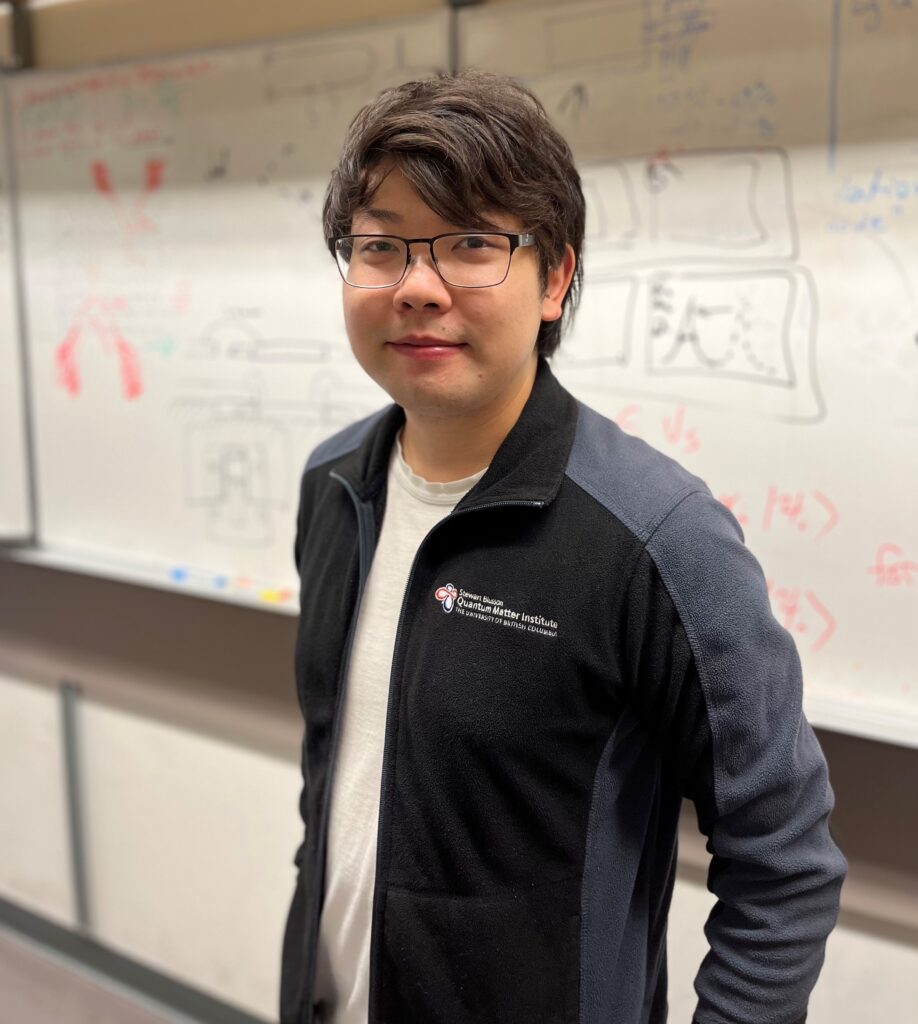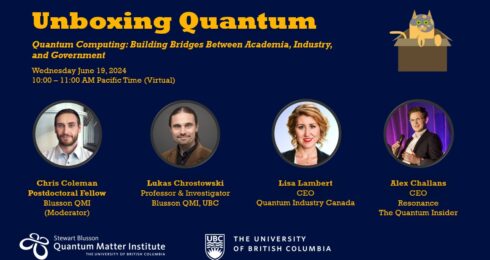
Pictured: Xiruo Yan.
“I still remember when I was starting out with my PhD and Jeff (Young) asked me ‘what do you want to do?’” said Xiruo Yan. “So I said, ‘I’ve always wanted to go into quantum computing.’”
Yan first realized his interest in quantum mechanics at the University of Waterloo, where he completed his undergraduate studies in 2014. At the time, the Institute for Quantum Computing had recently opened and had a new building, and the whole atmosphere around quantum computing felt exciting and new. By his third year in Waterloo, Yan wanted to build a quantum computer.
When he came to UBC in 2014 (it was winter in Waterloo, and when he left the airport in Vancouver he immediately saw cherry blossoms), he began working on his Master’s with Jeff Young. At UBC, Young introduced Yan to new experimental skills including how to fabricate single-photon detectors in the cleanroom in the Advanced Nanofabrication Facility at the Stewart Blusson Quantum Matter Institute (Blusson QMI). Since then, he has been working—often in the cleanroom—to bring theoretical ideas in quantum computing to life.
Yan is in the final stages of completing his PhD, and he will take on a role with Canadian quantum computing company Xanadu this summer. For Yan, who completed an eight-month internship with Xanadu’s hardware team last year, this is the culmination of that third-year dream: he will be applying his expertise in quantum error correction and integrated photonics to Xanadu’s hardware projects.
“I’ll be joining the system integration team as an experimental physicist to build computing tools so new we don’t even know what they look like yet,” said Yan, who brings his background in quantum computing architecture to solve some fascinating engineering challenges.
At Blusson QMI, Yan developed a quantum computing architecture that uses a very specific quantum system, with a methodology and techniques that can be applied to a range of possible systems.
“By learning the physics in a given system, we can apply a logic and give it meaning,” said Yan. “We can ask what kind of interaction is there, what kind of gate it gives you, and how to achieve universality within these interactions.”
(“Universality” is the sum of useful interactions that make a viable simulation of quantum computing processes.)
“Once we have universality, we need to think about a specific quantum computer, how to build it, and what problems we might run into,” said Yan. “Different systems have different problems, so we’re trying to anticipate the type of problem we might encounter, like how might the physics of a particular hardware imperfection corrupt quantum information?”
From there, Yan works to map the process into a quantum error model and think about what error correction code might resolve the error.
Yan hopes that students at Blusson QMI are aware of opportunities to connect with companies like Xanadu to land industry positions after graduation, and speaks highly of the internship experience with his new employer.
“In many ways, an internship is a bit like an audition,” he says. “Your resume can’t really convey the breadth of skills and experience UBC graduates bring to a particular role, and an internship is a way to show what you can do while developing skills and relationships that will benefit you as finish your degree.”
Yan encourages Blusson QMI students to look him up and send him a note: it can be hard to meet the right people and get a foot in the door with the company you’d like to work for.
“Feel free to reach out and connect with me!” said Yan.


